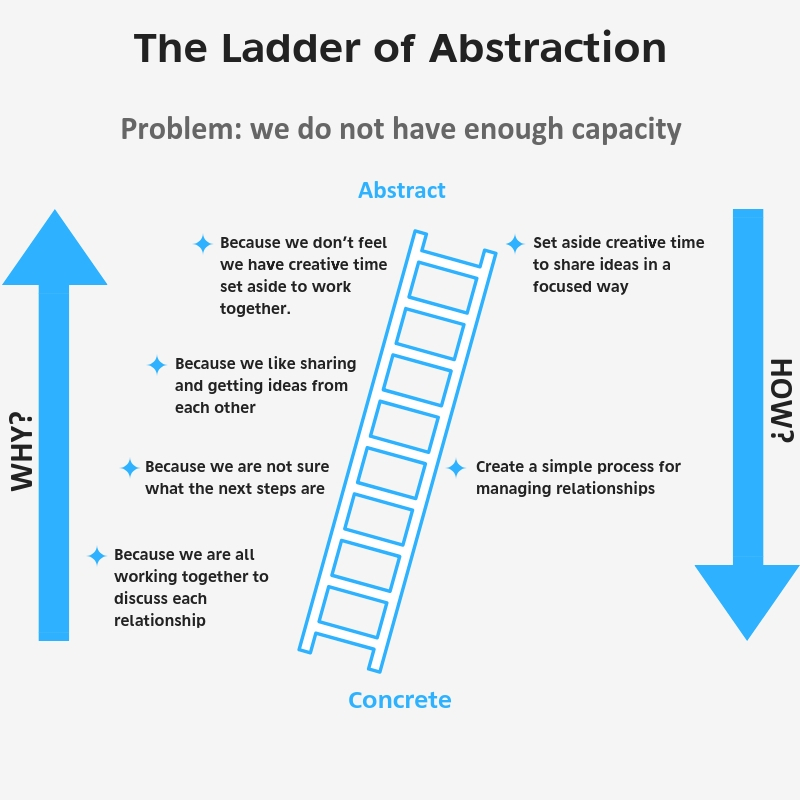
Have you ever had the experience where the same challenges keep coming up again and again? Whether that be in one to ones or in team meetings after a while these things get you down and you lose perspective or energy to solve them.
In my last job I managed a large remote team, we met together about 6 times a year. I used to sit in the day long meetings and note down everyone’s problems and take on the burden of solving them. I left the team meetings drained, stressed and quite honestly depressed. While my team left feeling upbeat and positive because they had unloaded everything. However, their initial relief soon faded when they realised that I wasn’t actually going to solve their problems. Just a quick aside – if this is a challenge you have – read: The One Minute Manager Meets the Monkey by Ken Blanchard.
So, how do you solve this problem and indeed all the problems of your team? During my last three months in the job I took on a new team, a team that had lots of challenges. I knew that I had a short period of time to support them and that taking on their problems wasn’t going to help. I needed to empower them and give them the tools to problem solve.
The team was a small team in a charity responsible for looking after supporters – they were saying they were overworked and couldn’t take on a bigger caseload. By looking at the problem in a more abstract way you start to unlock the root cause of the problem and frame it differently.
This is where the Ladder of Abstraction comes in. As you go up the ladder the thinking becomes more abstract and down the ladder thinking becomes more concrete. To move up the ladder you ask WHY and down the ladder you ask HOW. It is a useful tool to help describe our language and thoughts and re-label a problem. It can be used in many different ways but I have found it useful for problem solving and evaluating activity.
So how does it work?
You take your problem and start at the bottom of the ladder. For each statement you keep asking WHY. Eventually you get to a root cause of the problem and then you can work your way back down the ladder asking HOW. If you start with how you miss the opportunity to re-label the problem and you take it at face value. So, in the example below the problem is “We do not have enough capacity”, you might jump to – we need to recruit more staff or maybe we need to change a process or reduce workload. But you might be unsure which process to change or simply providing more capacity might not actually solve the problem – exploring the why helps you get to grips with this.

By using this simple tool we thought the problem was that the team didn’t have enough capacity but then we realised that we didn’t need to discuss every supporter together but that we could set aside a set time to creatively discuss specific challenges. This also helped the team focus on the solution and not the problem.
I have also used this tool personally to reflect on how a project or piece of work went – this is particularly useful if you feel that the project failed in some way. You could use the ‘What Went Well’ and ‘Even Better If’ method Better If’ method, which is useful. But the Ladder of Abstraction helps you to explore more deeply WHY things went wrong and then HOW you would do things differently in the future. It also makes it less personal because you can look at it objectively from a more abstract viewpoint.
I hope that this simple tool can help you unlock your thinking, solve problems and learn from failure. Used enough, asking WHY becomes second nature.

Emily Petty, a member of the Lucidity Network, is a fundraising and change consultant. She is passionate about helping charities build a relationship led approach to fundraising and supporting them to unlock potential and manage change. You can find her on Twitter @EmilyPetty1 and on LinkedIn
If you’d like to develop your thinking and get better results check out the Lucidity Network. We’re open a few times a year. There is more information about joining the Network here
In the meantime get involved at the Lucidity Facebook Community – a free resource for clearer thinking and better results.
